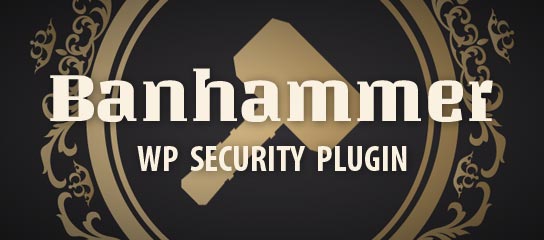Browser Extensions I Use Every Day
I love improving my workflow via browser extensions. I’ve written about some great extensions in the past, and since then have continued to refine my collection. Fast-forward 10 years of web development, and I’ve got the number of extensions down from 30+ to around eight per browser. These are essential extensions that I actually use every day. They make my online work/life much easier. Continue reading »
Replacement for JavaScript Errors Notifier (Chrome Extension)
Heads up about the JavaScript Errors Notifier extension for Google Chrome. Looks like it was removed from the Chrome store sometime last year. Not sure of the reason behind it, but can tell you that currently there are no suitable extensions to replace it. Kinda sucks because JavaScript Errors Notifier was one of my favorite “always on” extensions. It makes it easy to spot any JavaScript errors as you develop, design, or browse the Web. Fortunately there’s still a way […] Continue reading »
Opt Out of Google FLOC for Site Visitors (One Line of Code)
Google has another new thing they are doing, called FLOC (Federated Learning of Cohorts). It’s used to — surprise — track user activity across websites. Opting out ideally is handled by the user, who can customize their browser settings to disable FLOC while surfing around the Web. Beyond configuring your browser to opt-out of FLOC, you can disable it on any website with a single line of code. Continue reading »
PHP Code Not Displayed in Browser
Recently a reader sent in a bug report about this post on bbPress. For some reason the PHP code snippets were not displaying properly in the browser. Basically, instead of looking neat and tidy as always, the code looked like a garbled mess of spaced-out nonsense. And by “spaced out” I don’t mean in a good way: there was literally like 100px of vertical space breaking up the jumbled lines of code. It was definitely a mess, so I began […] Continue reading »
85 Firefox Shortcuts for Mac and PC
As my browser of choice, Firefox provides all the functionality I need for web design, application development, everyday surfing, and much more. With a handful of choice extensions installed, Firefox is a lean, mean “get-it-done” machine. Plus, I am always looking for new ways to boost productivity and increase efficiency. Of course, an excellent way to do this involves learning and using as many mouse and keyboard shortcuts as possible. Over the past few years, I have collected oodles of […] Continue reading »
More Killer CSS Resets
Just a note to let everyone know that I have updated my previous CSS reference article, A Killer Collection of Global CSS Reset Styles. The updated version features two more excellent CSS resets, as well as the updated Meyer reset and a link to Eric’s official CSS Reset page. The two new reset styles are the Tripoli Reset and Tantek’s Reset. Continue reading »
Are Adblock-Plus Visitors Seeing Your Content?
As Firefox continues to grow in popularity, it is inevitable that more and more users will install plugins such as Adblock and Adblock Plus. As we know, such extensions work by filtering site contents through a list of predefined wildcard directives and other rules. Users may also customize the block-list by right-clicking on unwanted images or even subscribing to an automated filterset updater. Apparently, a significant number of Firefox users employ these extensions to help control the relentless flood of […] Continue reading »
Killer Collection of CSS Resets
Using CSS to style semantically meaningful (X)HTML markup is an important key to modern web design practices. In a perfect world, every browser would interpret and apply all CSS rules in exactly the same way. However, in the imperfect world in which we live, quite the opposite frequently happens to be the case: many CSS styles are displayed differently in virtually every browser. Continue reading »
Everything You Ever Wanted to Know about Favicons
Fifty Favorite Favicons If you have a website, you need a favicon. For those who may not know, favicons are the small, square icons that frequently are associated with websites. Favicons appear in many places, including browser toolbars, bookmarks, tabs, and address bars. Favicons provide immediate visual identification of their represented sites, enabling super-easy navigation for Web users. While surfing bookmarks with fifty tabs open, finding and clicking on icons is far more efficient than reading through piles of link […] Continue reading »
10 Firefox Extensions that I Use Every Day
In the Beginning.. Over a year ago, I posted an article recommending over fifty essential Firefox extensions. Excited to have discovered the miraculous joys of extending Firefox with such amazing functionality, I loaded my primary copy of Firefox with just about every potentially useful extension that I could find. Several weeks were spent playing with new features, customizing preferences, and configuring options to gel together in an orchestrated chorus of blissful browser harmony. After experiencing the functional firepower of my […] Continue reading »
Absolutely Fabulous Browser Bookmarklet Things
..Or something. Frankly, I just needed an excuse to post these steaming little beauties online. Please note that I don’t lay claim to most of these browser bookmarklet/favelet tricks, but I do find them extremely useful. They are posted here for the sake of convenience and for reference purposes, so use at your own risk (i.e., I am not responsible if they crash your browser). Although I use most of these bad boys with Firefox, I wouldn’t be terribly surprised […] Continue reading »
Compressed JavaScript Compression
In this article, we extrapolate our favorite CSS-compression technique for JavaScript. Below, we outline the steps required to auto-compress your JavaScript documents via gzip and PHP. Two different compression methods are presented. The first method does not require htaccess, but rather involves the manual editing of JavaScript files. The second method employs htaccess to do all the work for you, thus requiring much less effort to implement. In either case, the result is the same: automatically compressed content delivered only […] Continue reading »
Fast, Effective PHP Compression
PHP compression is an excellent method of conserving bandwidth and reducing client download times. We have already discussed an excellent method for CSS compression, and in this article we share a super-easy technique for compressing all PHP content without editing a single file. Continue reading »
Invite Only: Traffic Control via Whitelist
Web developers trying to control comment-spam, bandwidth-theft, and content-scraping must choose between two fundamentally different approaches: selectively deny target offenders (the “blacklist” method) or selectively allow desirable agents (the “opt-in”, or “whitelist” method). Currently popular according to various online forums and discussion boards is the blacklist method. The blacklist method requires the webmaster to create and maintain a working list of undesirable agents, usually blocking their access via htaccess or php. The downside of blacklisting is that it requires considerable […] Continue reading »
Compressed CSS Compression
In this article, we discuss two practical methods for compressing CSS documents with PHP and/or .htaccess. See also: Compress CSS and JavaScript with PHP at WP-Mix. Continue reading »
IE Scrollbar Colors
Changing the color of scrollbars for Internet Explorer may very well be the oldest trick in the book. In fact, this post exists mostly for the sake of prosperity, as we here at Perishable Press strive to eliminate our entire offline library of website design notes by transferring them to the World Wide Web. Although library conversion requires time, patience, and determination, changing the color of IE scrollbars is relatively simple. Simply associate these CSS rules to the (X)HTML documents […] Continue reading »

